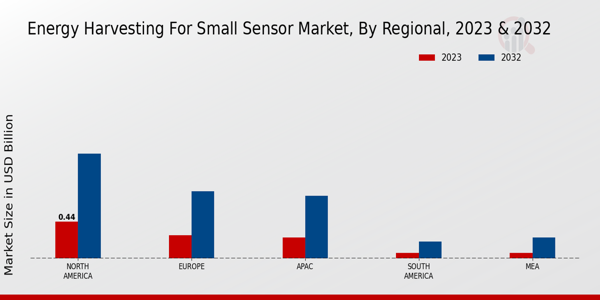The Energy Harvesting for Small Sensor Market has been rapidly growing due to the increasing demand for self-sustaining devices in various sectors such as healthcare, automotive, manufacturing, and consumer electronics. This market is characterized by a competitive landscape where numerous players are investing in research and innovation to develop advanced energy harvesting technologies. These technologies are critical in enabling small sensors to operate without relying heavily on batteries, thereby reducing maintenance costs and improving device longevity. Key factors fueling the competitiveness in this market include technological advancements, strategic partnerships, mergers and acquisitions, and a focus on sustainable energy solutions.
As businesses strive to enhance operational efficiencies and reduce their carbon footprints, the energy harvesting market for small sensors is poised for significant growth, attracting both established players and new entrants.Schneider Electric has established a strong presence in the Energy Harvesting for Small Sensor Market by leveraging its expertise in energy management and automation solutions. The company's focus on sustainability has driven the development of innovative energy harvesting solutions tailored to meet the specific needs of small sensor applications. Schneider Electric's strengths lie in its advanced technological capabilities and commitment to integrating energy efficiency into various systems.
With a robust portfolio of products that emphasize smart grid technologies and IoT integration, Schneider Electric is positioned to capitalize on the increasing demand for energy harvesting solutions that support intelligent infrastructure.
The company’s global reach and strong brand reputation further enhance its competitive edge, allowing it to respond effectively to market trends and customer demands.Nordic Semiconductor is another key player in the Energy Harvesting for Small Sensor Market, renowned for its low-power wireless technology solutions specifically designed for a wide range of applications. With a clear focus on Internet of Things (IoT) devices, Nordic Semiconductor has developed a suite of highly efficient energy harvesting technologies that allow small sensors to operate seamlessly and reliably.
The company's strengths include its dedication to innovation and a solid track record in delivering cutting-edge solutions that optimize energy consumption while maintaining performance. Nordic Semiconductor's expertise in low-power processing and communication helps it stand out in a competitive market, effectively catering to sectors looking for sustainable and efficient sensor operations. The flexibility and adaptability of its offerings further solidify its position as a significant contributor to the growth of the energy harvesting market for small sensors.
























Leave a Comment